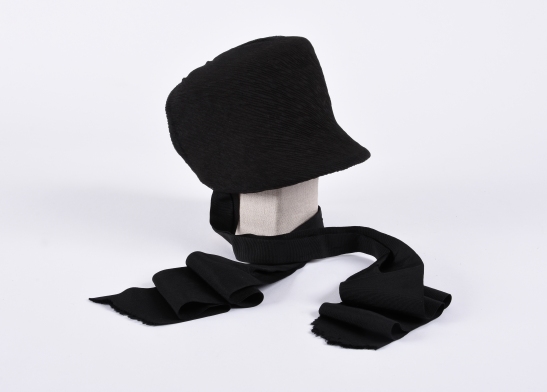According to the Guide to the Records of the Religious Society of Friends (Quaker) in New England the Society of Friends, largely known as Quakers, was formed in England in the early 1650s, they followed the teachings of leader and founder George Fox. The Friends began arriving in New England in 1656 with the first settlement in Aquidneck, with the first General Meeting of Friends in America taking place in Newport, Rhode Island in 1661. George Fox visited New England in 1672, and largely through his influence, the structure was formalized as the New England Yearly Meeting for Business. By 1743 the Quaker Yearly Meeting in Newport had an attendance of 5,000 people. Early on, the Quakers were heavily persecuted, but they soon managed to form at least seven local meetings. According to the Rhode Island Atlas, Massachusetts executed Mary Dyer, who had come to Rhode Island, and was executed when she returned to Boston and defied the law against those preaching Quakerism in the Bay Colony. Despite persecution, the Quakers grew in numbers and soon became leaders of the society and government of the colony until the early part of the eighteenth century, when they determined that involvement in secular life violated their principals, as a result, many of the Quakers who had become wealthy through trade were replaced by members who embraced a plain lifestyle.


Bonnets were not worn by Quaker women until the 1800s and were a response to the calling for a more plain way of dressing, and because in general women were not required to participate in hat honor, for Quaker women, the wearing of a hat or bonnet was not as symbolic. But for Quaker men, the hat was almost never taken off. The wide brim Hat which we think of as a Quaker Hat was simply a farmers hat made from felt, this was also to follow their custom of plain dressing.
The Religious Society of Friends remains active till this day, with some male and female Quakers still covering their heads.
~ Debby de Afonseca, Collections and Research Intern
Bibliography
Watkins, Susan Wareham. Hat Honour, Self-Identity and Commitment in Early Quakerism.
Quaker History, Vol. 103, No. 1 (Spring 2014), pp. 1-16
Wright, Marion I., and Robert J. Sullivan. The Rhode Island Atlas. Providence, RI: Rhode Island Publications Society, 1982.
Stattler, Richard D. Guide to the Records of the Religious Society of Friends (Quakers) in New England. Providence, RI: Rhode Island Historical Society, 1997.
“Hat Honor and Quaker Women.” Through the Flaming Sword. November 29, 2010. Accessed July 25, 2018.
Further Reading
Moses Brown Papers MSS 313
James, Sydney. A People among Peoples: Quaker Benevolence in Eighteenth-Century America. (1963), a broad-ranging study that remains the best history in America before 1800.
Dandelion, Pink, A Sociological Analysis of the Theology of the Quakers: The Silent Revolution. (Lewiston, NY: Edwin Mellen Press, 1996)
Dandelion, Pink, The Quakers: A Very Short Introduction.
